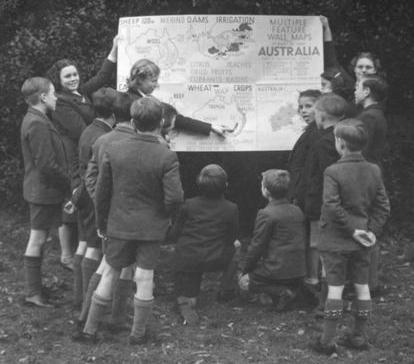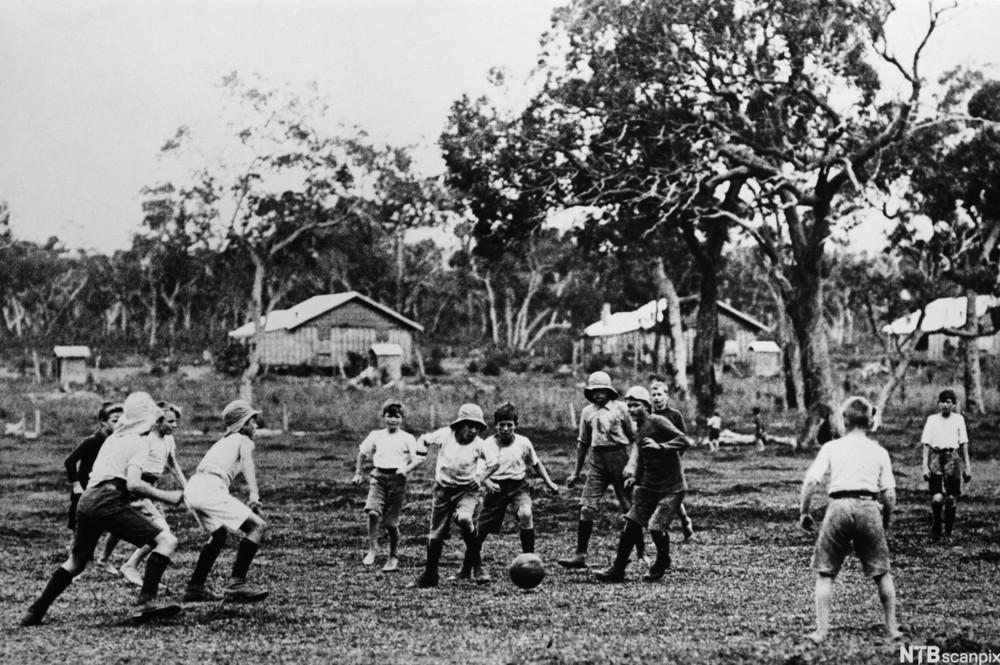
Vocabulary
relocate, childcare, orphanage, orphan, unwed, deem,appalling, deprived, reclaim, reunite
"At a time when empty cradles are contributing woefully to empty spaces, it is necessary to look for external sources of supply. And if we do not supply from our own stock we are leaving ourselves all the more exposed to the menace of the teeming millions of our neighbouring Asiatic races."
His Grace the Archbishop of Perth, welcoming British child migrants shipped to Australia, August 1938
Orphans Who Were Not Orphans at All
During the 1940s and 1950s and as late as 1970, as many as 130,000 children were removed from orphanages and group homes in Britain and deported to various countries in the Commonwealth. They were sent to Canada, Rhodesia, New Zealand, South Africa, and thousands were sent to western Australia.

Most of the children had been taken from their parents or unwed mothers, who had been deemed temporarily unfit. The children were often told that their parents had died, and when the mothers came looking for their children, they were often told that the children had died or been adopted by another family. The children were stripped of their citizenship, their paperwork was ”lost”, and they were put on ships headed for another part of the world. Only a few were adopted, since orphanages and group homes received money to care for the children and wanted to keep them there. Many were physically and sexually abused, and all of them wondered about where they came from and why they had been sent away.
There were many reasons behind the policy of child migration. Several countries in the Commonwealth had need of labour. Some of them felt they needed to increase their population so that other nations would leave them alone. A common logic for these nations was that they preferred to populate their countries with Brits, and it was important to get them while they were young, so that they could more easily adapt to their new nation. Only healthy Caucasian children were desirable.
Britain was sensitive to the needs of countries in the Commonwealth, and in addition saw child migration as a way to empty the orphanages and group homes in Britain; a way to save money. It cost an estimated £5 a day to pay for a child in an orphanage in Britain, but only about the equivalent of £0.50 in Australia.
Many child migrants received appalling standards of care, deprived of formal education. Children as young as seven years old were set to work on various construction projects. Since the children thought they had no one to return to, they were forced to endure their situation until they became adults.

Perhaps the most amazing aspect of this story is the fact that the public at large was unaware of the scale of child migration, and most people were not aware of child migration at all. It wasn’t until the late 1990s, when the work of social worker Margaret Humphrey began to be known, that people became aware of the scale of child migration in Britain.
Margaret Humphrey was a social worker in Nottingham, England. She first became aware of child migration from Britain in 1986, when a former child migrant contacted her from Sydney, Australia, trying to find her British family. She told Margaret that she remembered being placed alone on a boat bound for Australia. She had been told that her mother had died, but still wanted to find out about her family in England. Margaret was able to locate the woman’s mother, still alive. At first Margaret thought that this must have been a lone case, but soon found others who longed to reunite with their children or parents.
Margaret Humphrey spent years trying to reunite families, or at least to be able to tell them what happened to their loved ones. At first the policy of the governments of both Australia and Britain was official denial. It wasn’t until 2009 (23 years after Margaret began to reunite child migrants and their families) that the Australian government apologised for the deportation of children to Australia. Gordon Brown, then prime minister of Britain, apologised on behalf of the British government in 2010. Margaret Humphrey has founded the Child Migrants Trust, working to reclaim the identity of child migrants and, when possible, reunite them with their families. She has received many awards for her work, including the Medal of the Order of Australia and an honorary Doctor of Laws degree by the University of Nottingham. To earn money for the Child Migrants Trust, Margaret wrote a book about her work, Empty Cradles (also called Oranges and Sunshine). It has been made into a movie.
Watch this video, to learn more about child migration from Great Britain to Australia.
Tasks and Activities
The Book
Read the prologue to [i]Empty Cradles[/i] and use the Ribbon game (see below) to work with the following tasks:
- How is it possible that the forced migration of thousands of children was kept secret for so long?
- Australia and England both actively agreed to send a certain number of children from England to Australia. Why then do you think Australia and England reacted so differently to Margaret Humphrey's research into who the orphans were and where they came from?
- Many parents and children were deceived by governmental organisations. In what situations do you think it is defensible for a government to lie to its citizens?
- Margaret Humphreys has worked for many years to try to bring justice to the "orphans" sent out of England in the 20th century. Identify two of the challenges of our time that will require dedication and hard work to try to pursue justice.
- What aspects of the story resonated with your experiences or experiences of others that you have heard about?
Ribbon game: Divide the class into four or five groups. Every pupil in each group is given a coloured ribbon that they tie around their finger or wrist. The ribbon colours help pupils identify the different groups. The colour of the ribbon is matched to a specific question. For example, one group might have yellow ribbons. Pupils with yellow ribbons are to work with question number 1. The pupils are to go around the classroom individually and conduct mini-interviews with four people, one from each group, and write down two sentences from each mini-interview. At each mini-interview, the pupils can take turns interviewing each other.
After the pupils have conducted the mini-interviews, all the pupils with a red ribbon sit at one table, pupils with a blue ribbon sit at another table, and so on. The groups then discuss the question or task they were to explore.
Vocabulary
Create words by adding prefixes: here